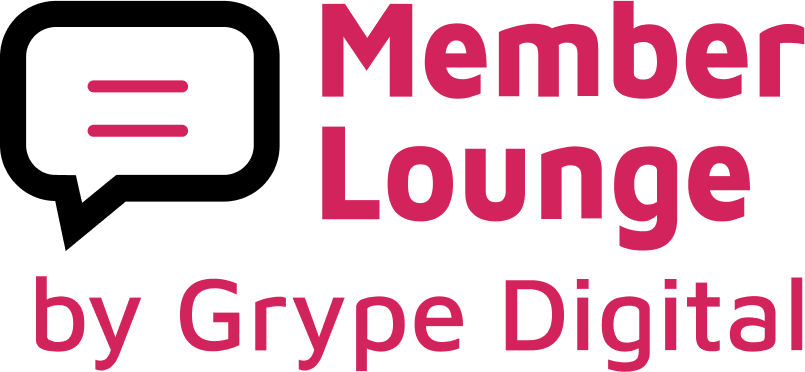We asked hundreds of association executives and membership managers about their membership onboarding questions. We will share our top member onboarding tips that answer the top 12 most common questions here!
1. What is the best time to check in with new members?
Right away. Immediately upon purchase of membership. Your new members purchased their membership because they see value in it. Meet them halfway with a warm welcome that includes helpful onboarding information. Helping them find their footing through your member benefits will make a huge difference in their engagement trajectory as a member. This is topmost in the onboarding tips you need to enhance your member experience.
2. What’s the best approach to successfully onboard a hybrid membership with corporate and individual members?
This is a good question and one we are familiar with since all of our clients have multiple stakeholders with different interests. To answer your question, consider whether the goals and benefits you offer corporations are the same as the goals and benefits you offer individual members.
The memberships being purchased by corporate members are, essentially, also being purchased by individuals. Corporate members are, ultimately, individual members. If the aspirations of the corporate members are the same as your individual members, then one marketing strategy and one website to deliver your marketing message will suffice. If, however, the aspirations and benefits for corporate membership differ from individual aspirations and benefits, a two-track approach with two separate websites may be the best option.
3. What are some key metrics we can use to measure engagement?
This is an important question that comes down to your member benefits and your association’s goals for your members. What is the ideal user journey you have designed for your members and how do you define successful engagement? In general, the biggest indicator is whether the members use your benefits, such as attending your events, connecting with other members, or downloading educational material. Keep in mind that there will always be a segment of your members who will not engage in anything you offer. Don’t let this loyal but passive segment discourage you regarding your engagement metrics. They exist and their membership dues contribute as well!
4. What types of communication work to keep new members and long-standing members engaged year-round, without sending them a million emails?
We hear you! We hear this all the time. Associations are sending out (many) emails and even hard-copy mail and still members don’t read them and still they don’t know what is going on. There are two solutions to the engagement dilemma. Firstly, it comes down to value. When associations offer benefits that enhance their members professionally and personally, associations can stop chasing members and their members come to your benefits.
Secondly, members have to be given the ability to easily find their valuable member benefits. Are your benefits hidden inside links inside emails that get buried under 100 other emails your members receive in a day? How can your members find your benefits on their own time? The solution is to create a customized member portal where your members can come to you, so to speak, when they are motivated to engage. They can browse your member benefits, sign up for events, connect with other members, volunteer, or learn something when inspiration strikes on their end.
Check out our handy downloadable Successful Member Onboarding with Your Member Portal Checklist & Worksheet to help you apply these ideas to your organization.
5. How can we motivate prospective members to attend our orientation session?
This is an interesting topic, especially when considering onboarding tips. Our suggestion would be to stay away from this marketing model. Trying to convince people to attend a marketing event geared at convincing them to be a member is a hard sell. The best approach is to bring in prospective members by offering value — an interesting event or downloadable content, for instance, incorporating effective onboarding tips. Once you are impressing your prospects with valuable information, you gain their trust and respect. In this way, you can weave in the notion that they can get even more value and benefits through membership. Our motto: offer value.
6. How can you replace a phone call to onboard a new member properly, when it’s just not feasible with a huge membership?
You are correct; there is nothing like a friendly human touch to welcome a new member — but it’s so expensive and not an option for large-scale associations. The solution that works best is to leverage your customized member portal to include an easy-to-digest and easy-to-navigate onboarding section with valuable onboarding tips. You can include welcoming onboarding videos, and short videos describing each of your member benefits that specifically explains how it will benefit the member professionally. You can have screen share recordings of how to access your member benefits.
This is particularly helpful for a more senior membership base or for membership populations who are less tech-savvy. Another smart strategy is to have a buddy program where members pair up to support each other, incorporating onboarding tips. This is a great member benefit for members and also takes some pressure off of your association to be the sole welcoming committee.
7. Do you have any tips to maintain a personalized connection while automating reach outs as much as possible?
One easy way to create a personalized feeling for your emails is to use liquid fields in your emails so that you can automate emails that appear specifically written for your recipients. Using a sophisticated data management system such as CiviCRM will allow you to pull nuanced reports for people who did or didn’t do certain actions over a specified period of time.
8. How do we strategically present vital information to our new members so it’s not overwhelming?
Having a lot of onboarding content and many benefits to share with members is a great problem to have! A good approach would be to have an onboarding section of your member portals where members can reference the material as needed. On the specific portal pages for each benefit, you can link back to your onboarding material for each benefit. It is a great touch to assume that your members need hand-holding and background knowledge. Those that don’t need it can skip it, and those that do will be impressed and feel taken care of.
9. How do we re-introduce a returning member to the association and our benefits?
This is an important point to address. You will want to set up a different onboarding experience for returning members. An acknowledgment that they are returning members with a big “thank you and welcome back” as part of a different onboarding email series than your new first-time members would be a good start.
10. What are some creative ways one can get members to share information about themselves so you can deliver a more personalized, meaningful experience?
This is a great point, especially when considering onboarding tips. We cannot ask our members for a census-style list of personal details to share. Even though this may be helpful in shaping member benefits that are geared toward your audience, it can feel invasive to ask. The best way around this, which isn’t at all underhanded, is to offer your members the option of posting a public profile within your customized member portal, incorporating onboarding tips. Your members can choose to share details such as how long they have been in the field, how they self-identify, what their interests are, etc. This public profile is a great offering to help members connect with like-minded members and helps you review the data to develop member benefits that are most relevant to your membership.
11. What are two ways to entice inactive members back?
It costs ten times as much to attract a new member than it does to hold onto an existing member. For this reason, keeping our existing members happy should be our priority. We don’t have to get distracted looking “out there” for who could potentially join. Look at the data on the members you have and their interests and offer your returning and long-standing members value. It is also important to keep in mind that individuals who are starting out their careers want different things than individuals who are experienced in their field. A good option is to have member benefits that are only accessible once members reach a certain stage of maturity with the association, eg. 5 years of membership, and leadership opportunities that are resume builders that are only available to long-standing members.
12. What is the ideal number of touch points (eg. emails) throughout the year?
This is a million dollar question. How much is the right amount? How much is too much? Every association gets feedback that they send too many emails. According to the email marketing gurus, these complainers do not understand how email marketing works. Email marketing does work. The important factor is sending your members content that they want to hear about. When the content is interesting to them, they don’t complain that it’s too much. Invite your new members to fill out a questionnaire to share the topics and benefits that interest them and send them only this information. In general terms, a 10% open rate and 3% click rate is normal. Ideally you do want these numbers much higher and you will by getting your email content to be as specific to the recipient as possible and those open rates will increase.
Get Started
This article comes with a worksheet with easy ways to help get your team on the right foot to implementing the ideas shared here. Get your copy of theSuccessful Member Onboarding with Your Member Portal Checklist & Worksheet.
Looking for More Ways to Improve Your Member Retention Rate?
Learn about our Member Portal Strategy Workshops and start your association on a clear path to growth!





